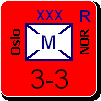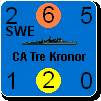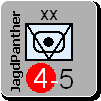composer99
Posts: 2923
Joined: 6/6/2005
From: Ottawa, Canada
Status: offline

|
First off, playing with "no ZoCs on surprise" is not very common, to my knowledge, in table-top WiF:FE. It is a game-breaking option that favours the Axis very heavily (set up a Barbarossa campaign with No Zocs on Surprise and you'll see what I mean). Further, I don't believe it is even being made available as an option in MWiF. At any rate, setting up a Belgian defence when there is no ZoCs on surprise is a futile gesture because there is no effective defence: the Germans can run into any empty Belgian city, envelop and crush the tiny Belgian army in its entirety without the slightest risk, and push up to the Franco-Belgian border.
On a general note, provided the Germans have good weather, decent rolls and their paratrooper corps, they can typically dismantle any Belgian defence on the surprise impulse, taking all three cities. Antwerp if defended is difficult to take unless the Germans are attacking from Rotterdam as well.
The default Belgian defence is to put one corps (usually the CAV) in Liege and two in Antwerp, leaving Brussels empty, almost without exception. There are three simple reasons:
- the unit in Liege protects Brussels from being seized thanks to its ZoCs. Liege is too easily seized no matter how many units you have with all the vectors for the Germans to attack from.
- the units in Antwerp can prevent the Germans from taking it if they do not attack Netherlands.
- Spreading the units out makes them easier to attack, and putting any in Brussels makes it possible for a regular overland attack to take place, guaranteeing the fall of Brussels during the surprise impulse.
All of the above assumes that the Germans are attacking Belgium with the present WiF:FE frontage. Note that if the Germans attack the Netherlands first, regardless of their frontage on Belgium, the Belgian response is pretty well as above since the Germans will be able to get to both clear hexes north of Liege.
If, on the other hand, the "Maastricht" hex becomes Dutch, the German frontage against Liege goes from a potential maximum 5 hexes at all times to a potential maximum of 3 unless they attack the Dutch in advance of or in conjunction with an attack on Belgium.
A simultaneous attack on the Netherlands and Belgium almost certainly means the CW gets to stuff either Antwerp or Rotterdam (or both if anything goes wrong) unless the Germans spend an o-chit on a supercombined. This is the case in WiF:FE as it stands, and the change of control of the "Maastricht" hex would not alter that as far as I can see. CW units in these hexes is bad news for the Germans.
If the Germans attack only Belgium and the Maastricht hex is Dutch, they cannot hope to seize Antwerp unless it is empty and they paradrop in, and they would have a maximum 1 hex on Brussels (+ maybe a paradrop). Therefore the Belgians' best response is probably to put the two infantry corps in Brussels and hope for the best and leave the cavalry in Liege to slow the Germans up.
However, at the end of the day, there are I think three compelling reasons for the "Maastricht" hex to remain German. They are related to the historical situation and how WiF varies from that:
First, the Allied armies facing Germany were very ill-led and badly organized, which is one of the reasons why France fell so quickly. Since Allied players cannot be expected to replicate the incompetency of their historical counterparts, any change in the map in this area that negatively affects Germany's flexibility and tactical situation (especially fighter cover as Norman42 notes) is a big edge for the Allies.
Second, the main German thrust historically was through the Ardennes, not through Flanders. This option does not exist in WiF: thanks to the ZoC mechanic the Germans cannot push to the western edge of the Ardennes and breakout into the open terrain of France: there will always be French troops in the way. By default the main German thrust must go through Flanders if they want to blitz their way through clear terrain. A Dutch-controlled Maastricht hex makes it harder for them to do this.
Third, as Norman42 states, the German campaign in the Low Countries and France takes a very long time to do properly, far longer than historical, and especially so if the Germans roll one or two bad land attacks or get bad weather during May/June. If they get fantastic weather, good turn ends and double impulses over the winter they can wrap things up early, but that is atypical. Typically France lasts through to August and even into September, and the Germans have had to attack the Dutch or the Belgians in March/April. Once again, a Dutch-controlled Maastricht hex adds to the time required for the Germans to polish off France, and all the more so if anything goes wrong.
_____________________________
~ Composer99
|
 Printable Version
Printable Version
















 New Messages
New Messages No New Messages
No New Messages Hot Topic w/ New Messages
Hot Topic w/ New Messages Hot Topic w/o New Messages
Hot Topic w/o New Messages Locked w/ New Messages
Locked w/ New Messages Locked w/o New Messages
Locked w/o New Messages Post New Thread
Post New Thread